class: center, top, title-slide .title[ # <strong>Population Ecology III: Some Of All The Rest</strong> ] .subtitle[ ## .white[EFB 390: Wildlife Ecology and Management] ] .author[ ### <strong>Dr. Elie Gurarie</strong> ] .date[ ### October 18, 2022 ] --- <!-- https://bookdown.org/yihui/rmarkdown/xaringan-format.html --> ## So far ... We've studied this equation: `\(\huge N_t = N_{t-1} + B_t - D_t\)` with two assumptions: .pull-left.darkblue[ ### Exponential Growth **Births** and **Deaths** __proportional__ to **N** ] .pull-right.darkgreen[ ### Logistic Growth **Births** decrease and/or **Deaths** decrease (.green[linearly?]) with **N** ] --- ## More complex topics in population ecology Blowing up: `$$\huge N_t$$` **into:** | | | |---|----| | sex / age classes: | **structured populations** | | multiple sub-populations: | **meta-populations** | | multiple species: | **competitors / predator-prey** | | infected, susceptible, recovered: | **disease dynamics** | --- ## Drilling into structure of Birth and Death .blue[ `$$\Large N_t = N_{t-1} + B_t - D_t$$` ] .box-blue[ .pull-left[ .large[**B** = Births] - **Fecundity** = `#` births / female / unit time (*unit time* can be any unit of time, but is usually year) ] .pull-right[ .large[**D** = Deaths] - **Mortality (rate)** = probability of death / unit time - **Survival (rate)** = 1 - Mortality rate ] ] --- .pull-left-60[ ## **Basic fact of life I:** Survival varies with age! 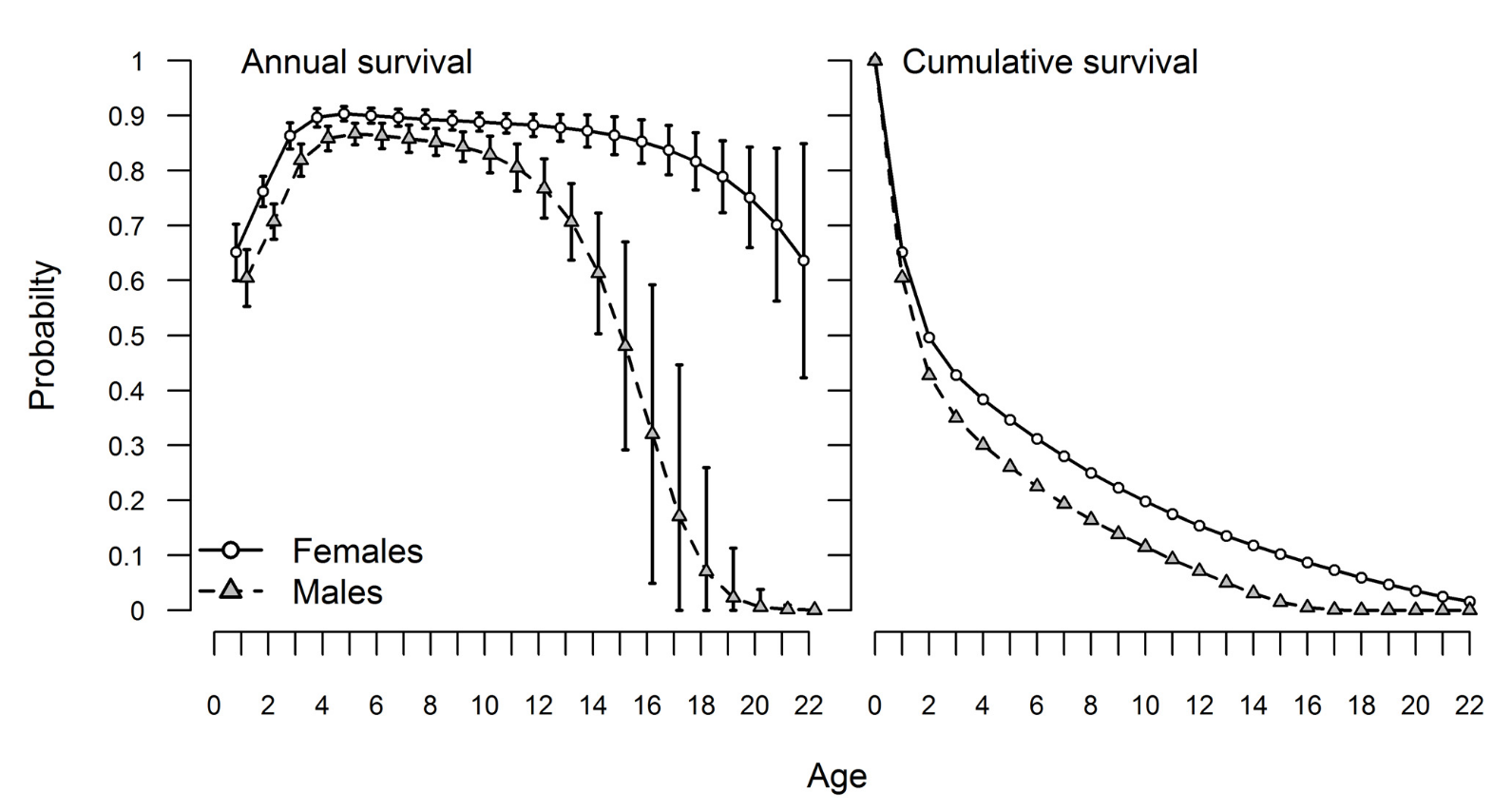 - **Survival Probability** ( `\(S_0, S_1, S_2, ...\)` ) always between 0 and 1. - **Cumulative Survival** ( `\(1, S_0, S_0 S_1, S_0 S_1 S_2, ...\)` ) always starts at 1 and goes to 0 .center[([Altukhov et al. 2015](https://journals.plos.org/plosone/article?id=10.1371/journal.pone.0127292) )] ] .pull-right-40[ 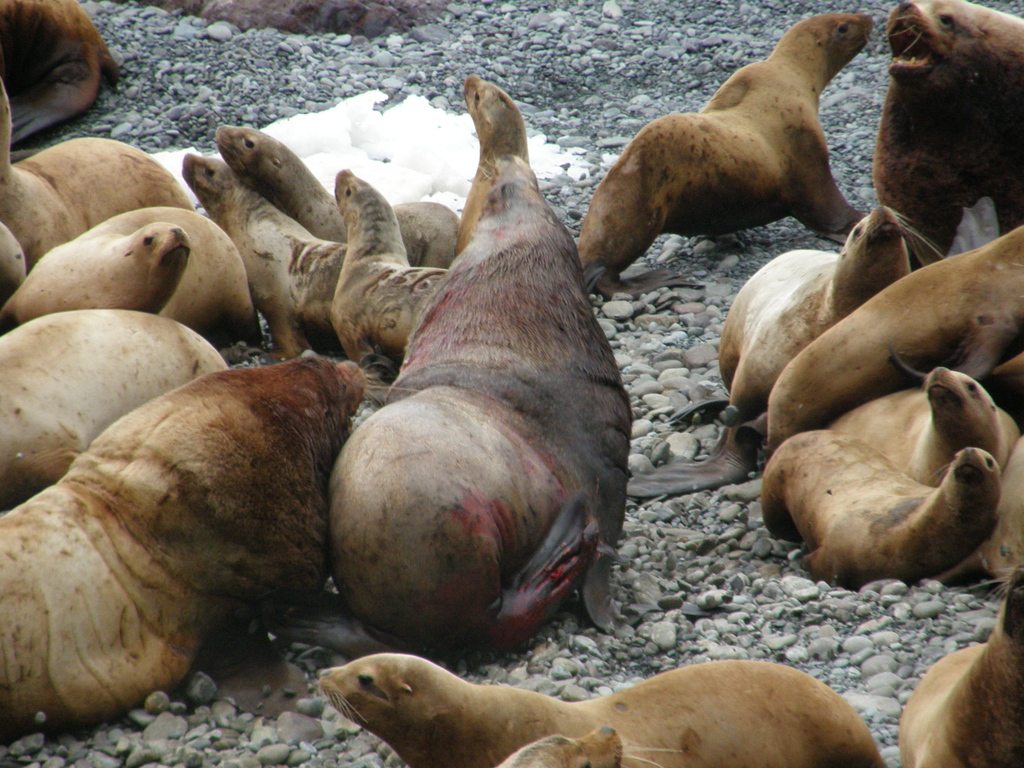 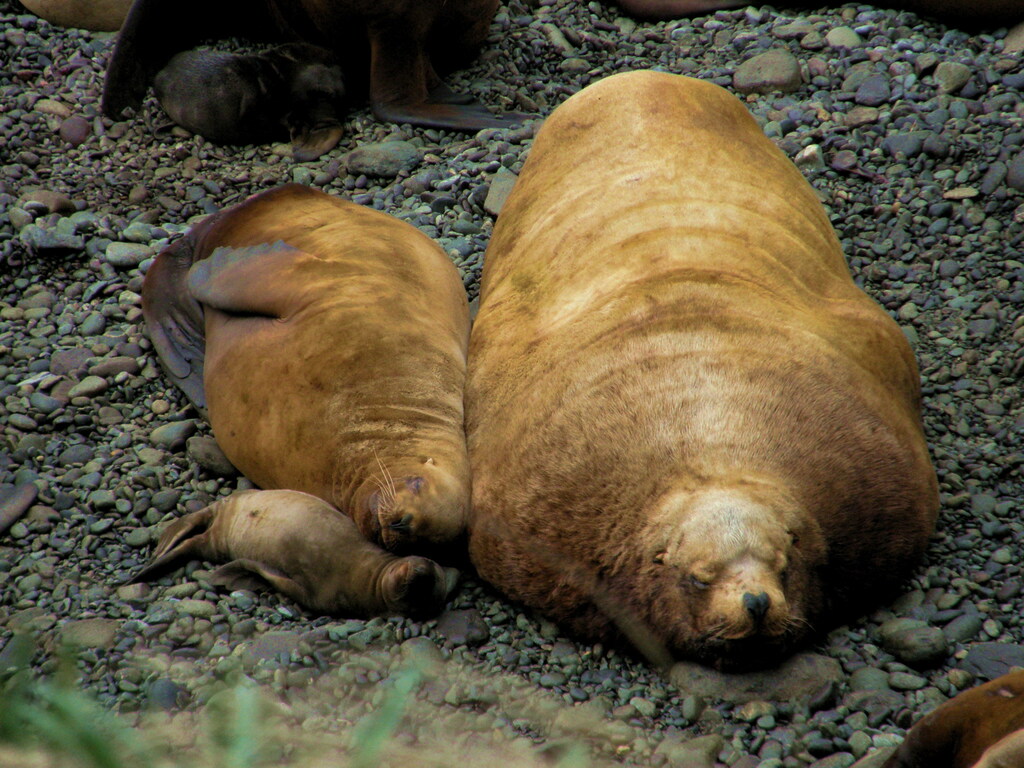  ] --- ## **Basic fact of life II:** Fecundity varies with age! 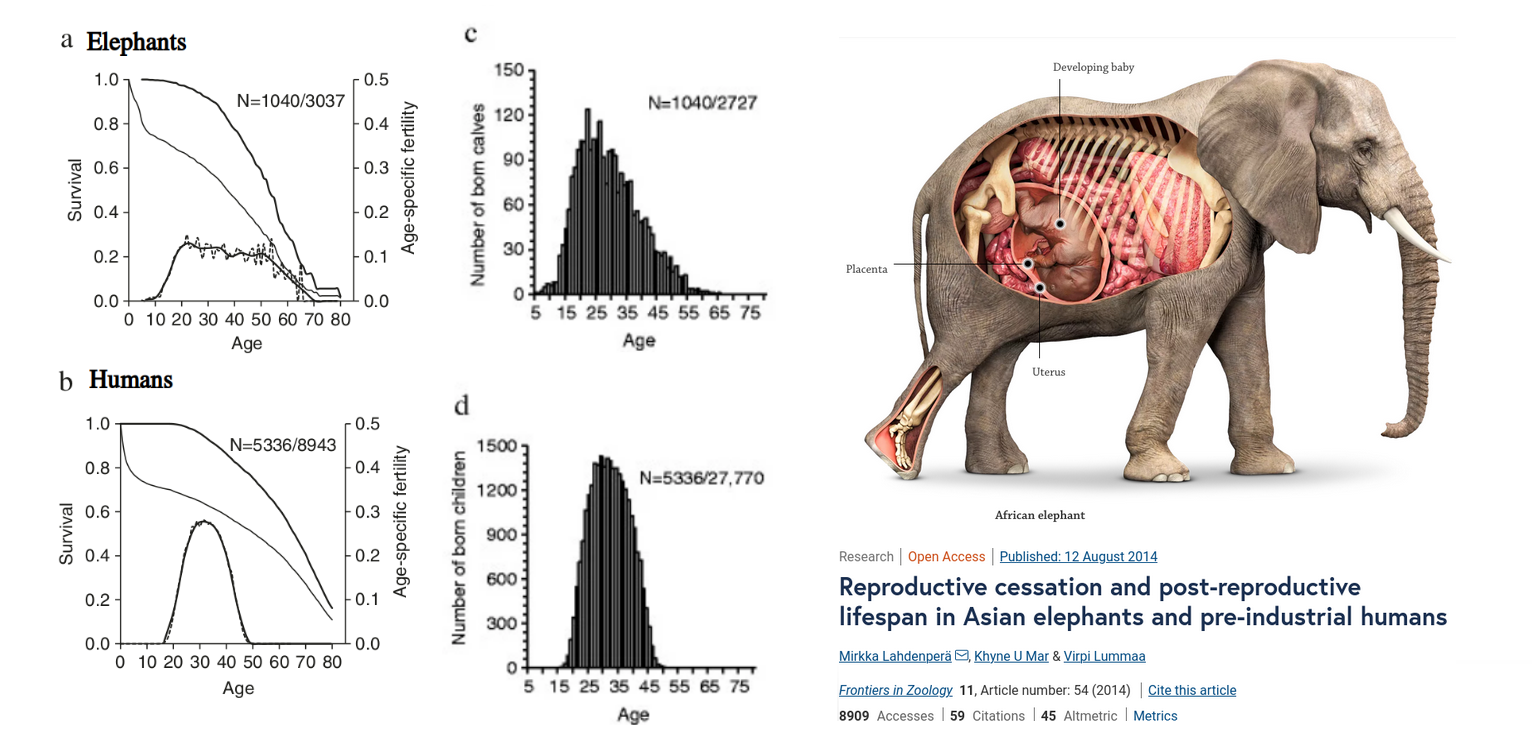 .center[([Lahdenperä et al. 2015](https://frontiersinzoology.biomedcentral.com/articles/10.1186/s12983-014-0054-0))] --- background-image: url("images/KhanLifeHistory.png") background-size: cover class:white ## .white[**Life History** is the reproduction / mortality pattern] --- ## Survival curves .pull-left-60[ 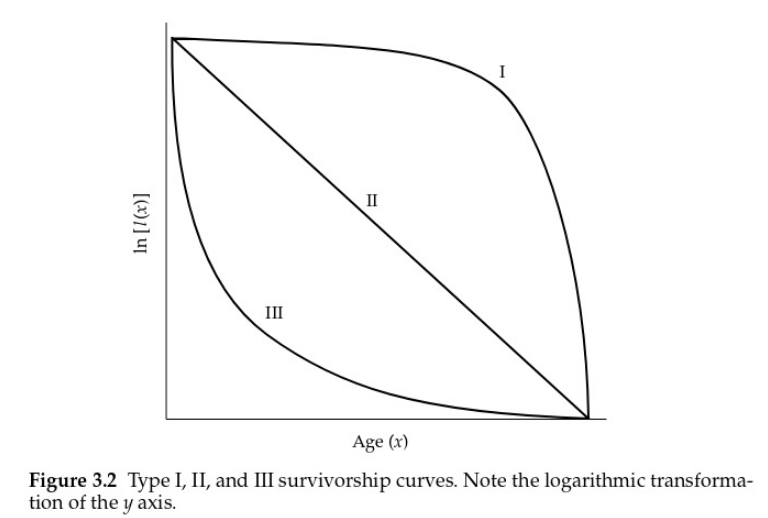 ] .pull-right-40.large[ - **TYPE I:** high survivorship for juveniles; most mortality late in life - **TYPE II:** survivorship (or mortality) is relatively constant throughout life - **TYPE III:** low survivorship for juveniles; survivorship high once older ages are reached ] --- # Life history strategies: *r*-selected, vs. *K*-selected species For a long time a popular **paradigm** (conceptual model purporting to explain a wide range of phenomenon) for understanding evolutionary drivers of life-history variation. Still popularly taught: .center[ 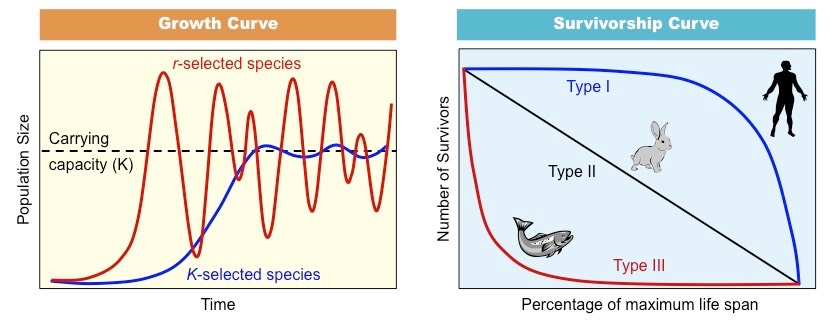 ] --- background-image: url("images/walrusoysters.png") background-position: center background-size: contain .pull-left-30[ ### r-selected species #### strategy: - lots of offspring - little or no parental investment - semelparous - early maturity - Type III survivorship - low survivorship - short life-expectancy #### drivers: - small size - unstable / unpredictable environments #### consequence - highly fluctuating populations ] .pull-right-30[ ### K-selected species #### strategy: - few offspring - lots of parental investment - high survivorship - late maturity - iteroparous - long life-expectancy - Type I survivorship schedule #### drivers: - stable environments - large #### consequence - more stable / slowly-fluctuating populations ] --- ## Nice theory you've got there, but lots of counter-examples .pull-left[ - What about **trees**? They're big, they're long-lived (very **K**), but they produce and disperse a **heckload** of seeds (very, very **r**). ] .pull-right[ - What about **iteroparous** species (**K**) that are hedging their bets against high inter-annual variation in environmental conditions (very **r**)? ] > .green[The r- and K-selection paradigm was focussed on **density-dependent selection**. This paradigm was challenged as it became clear that ... **age-specific mortality** provide[s] a more mechanistic link between an environment and an **optimal life history** ...] ([Reznick et al. (2002) Ecology](https://esajournals.onlinelibrary.wiley.com/doi/full/10.1890/0012-9658%282002%29083%5B1509%3ARAKSRT%5D2.0.CO%3B2)) --- background-image: url("images/salmonids.png") background-size: cover ## Salmonid (counter)-example <br><br><br> .center.large[ **Semelparous species** Much bigger eggs (189 > 86 mg). Also nest building and guarding behavior, before dying, i.e. greater investment in **Juvenile Survival** over **Adult Survival**. The iteros just keep staying alive and trying to breed again and again. ] -- .pull-left.center[ > Inconsistent with **r**-**K** paradigm! ] --- .pull-left[ ### Tasmanian devil (*Sarcophilus harrisii*) .center[<img src='images/tazzy.jpg' width='70%'/>] Only marsupial carnivore | range restricted to Tasmania .pull-left[ .darkred[Dying of *facial tumor disease*; an infectious cancer (!) which kills nearly all adults > 3 years ]] .pull-right[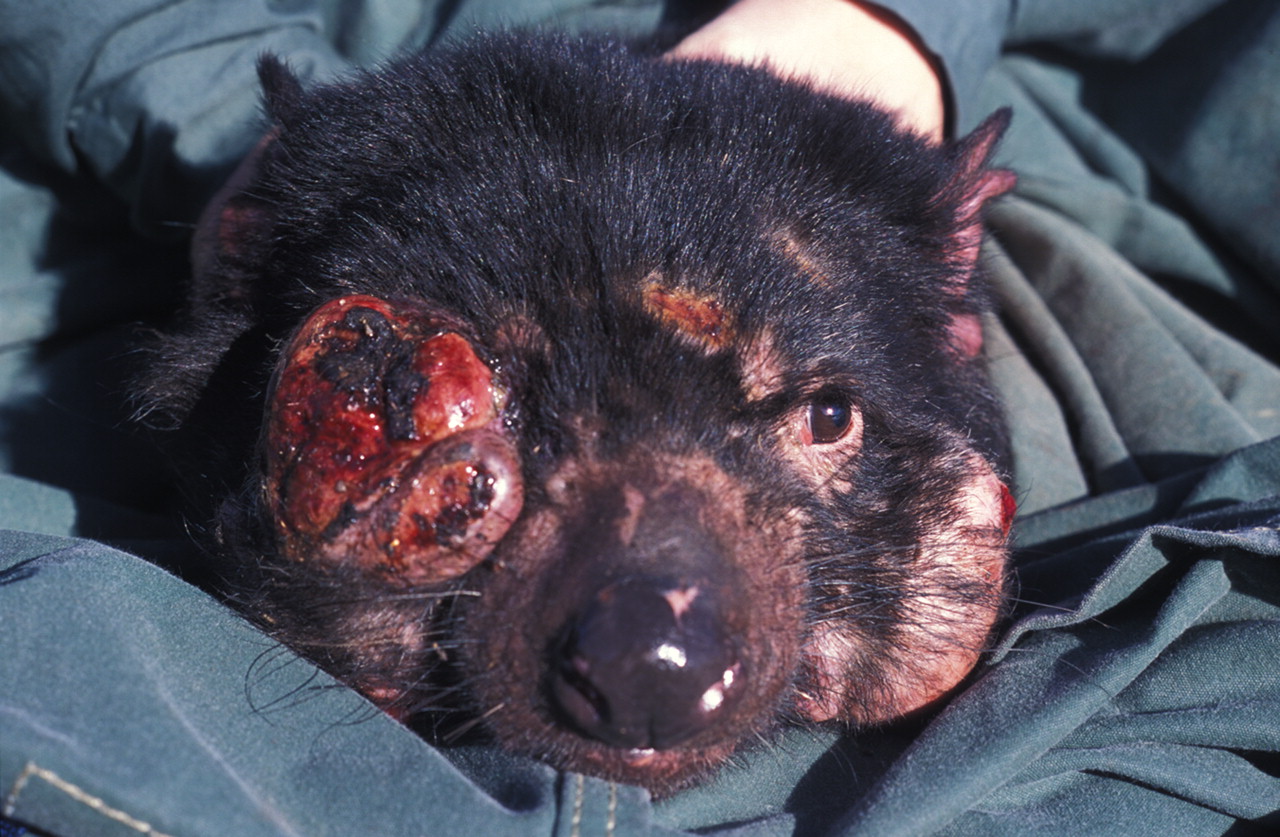] ] -- .pull-right-40[ ### Switch to Semelparity .green[**Previously:** Longer-lived, and iteroparous, with later birth (over 1 year old)] 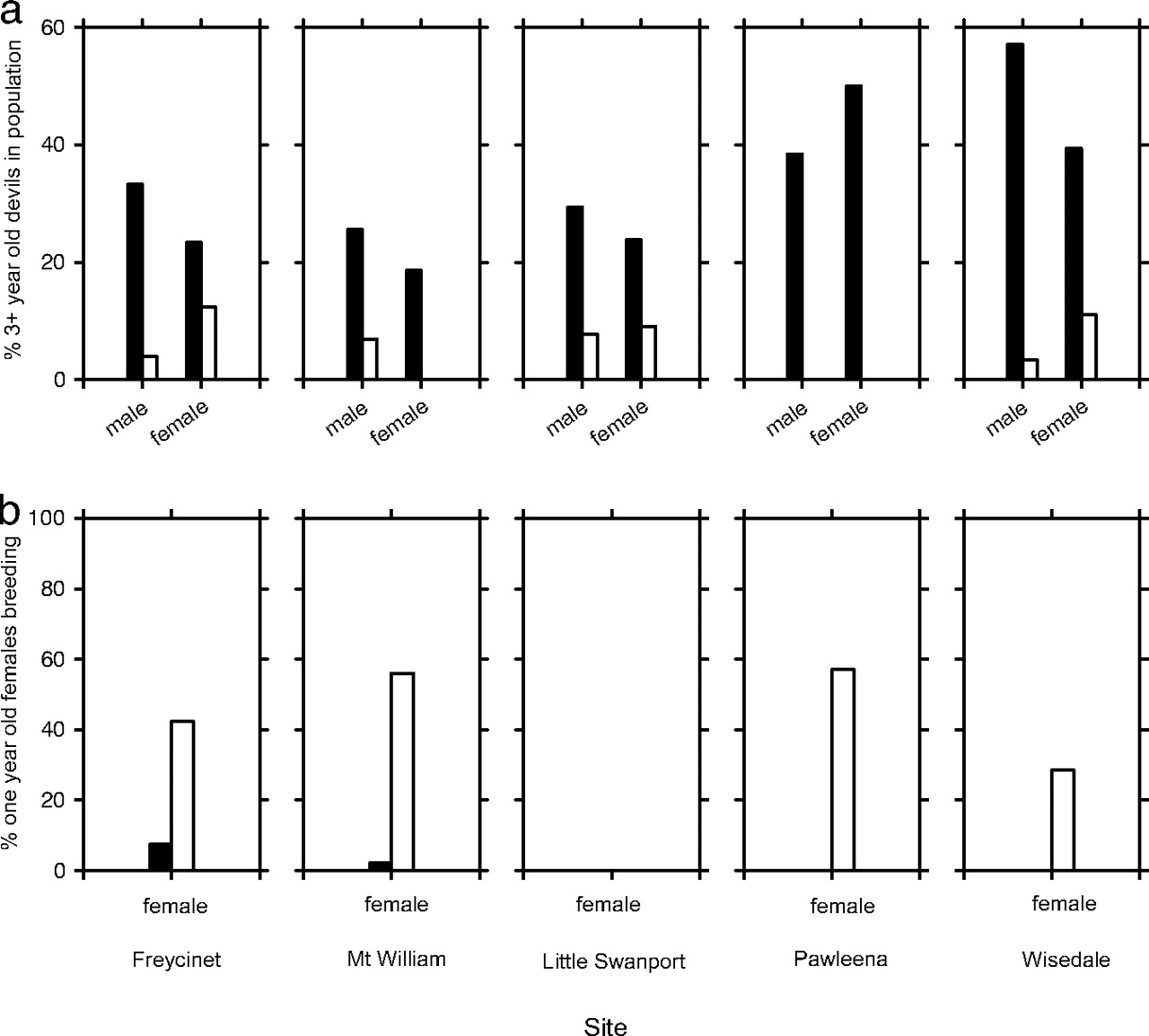 .darkblue[**Now:** Semelparous, one-shot, younger mothers (almost NO 2-3 year old animals!)] ([Jones et al. (2013)](https://doi.org/10.1073/pnas.0711236105)) ] --- ## *Monoceros academicus*: Three Life Stages . | Larva | Sophomore | Emeritus | --- |:----------:|:------:|:---:| . | <img src='images/unicornlarva.webp' height='150px'/> | <img src='images/unicornstudent.jpg' height='150px'/> | <img src='images/oldunicorn.webp' height='150px%'/> | <font size = 5> Survival | <font size = 5> 0.5 |<font size = 5>1 | <font size = 5>0 | <font size = 5> Fecundity |<font size = 5> 0 | <font size = 5>1.5 | <font size = 5>0.5 | |||| > - **Survival** is a **probability** (unitless) > > - **Fecundity** is an **expected number** of offspring (n. ind.). </center> -- **Human experiment:** 8 volunteers please. --- .pull-left-40[ ## Experiment: results Stage | Survival | Fecundity ----------|------|--- 1. larvae | 0.5 | 0 2. sophomore | 1 | 1 3. emeritus | 0 | .5 See numerical experiment: https://egurarie.shinyapps.io/AgeStructuredGrowth/ ] .pull-right-60[ <img src="Lecture_PopulationEcology_PartIII_files/figure-html/runPop1-1.png" width="100%" /> ] >- Overall growth: `\(\huge \lambda = 1\)` >- Stable age distribution: 50%, 25%, 25% --- .pull-left-40[ ## Change one value .... Stage | Survival | Fecundity ----------|------|--- 1. larvae | 0.5 | 0 2. sophomore | 1 | <font size = 6, color = "red"> **2** </font> 3. emeritus | 0 | .5 ] .pull-right-60[ <img src="Lecture_PopulationEcology_PartIII_files/figure-html/runPop2-1.png" width="100%" /> >- Overall growth: `\(\huge \lambda = 1.11\)` >- Stable distribution: 54%, 24% 22% ] --- ## *Monoceros academicus*: Type I .pull-left[ <img src="Lecture_PopulationEcology_PartIII_files/figure-html/MonocerusTypeI-1.png" width="100%" /> ] .pull-right[ - **TYPE I:** high survivorship for juveniles; most mortality late in life. Investment in young and survival. Typical of long-lived species. Stage | Survival | Fecundity ----------|------|--- 1. larvae | 0.5 | 0 2. sophomore | 1 | 1.5 3. emeritus | 0 | .5 ] --- .pull-left-70[ ## Pink Salmon (*Onchorrhynchus gorbusha*) .pull-left[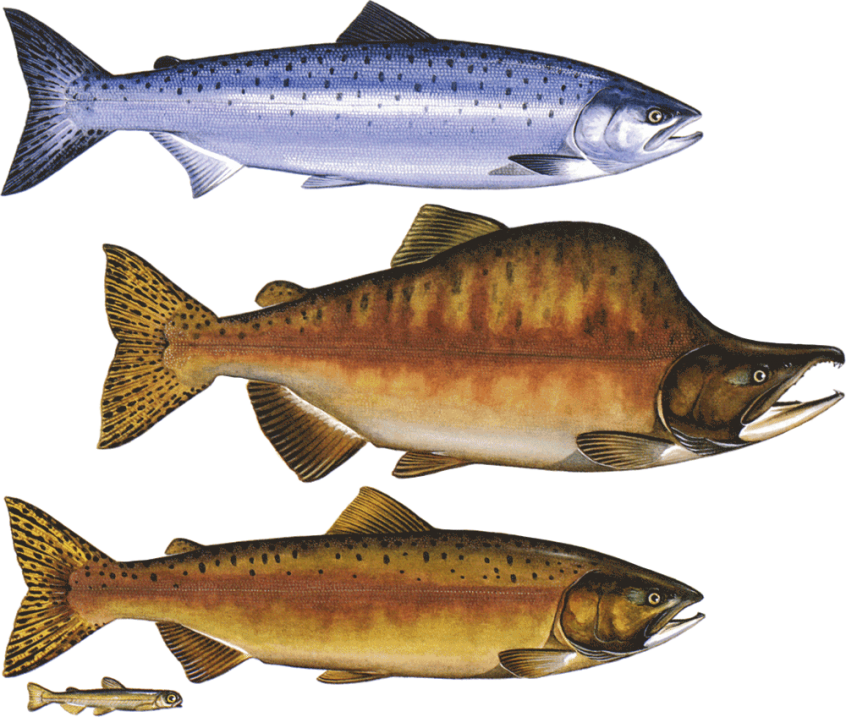] .pull-right[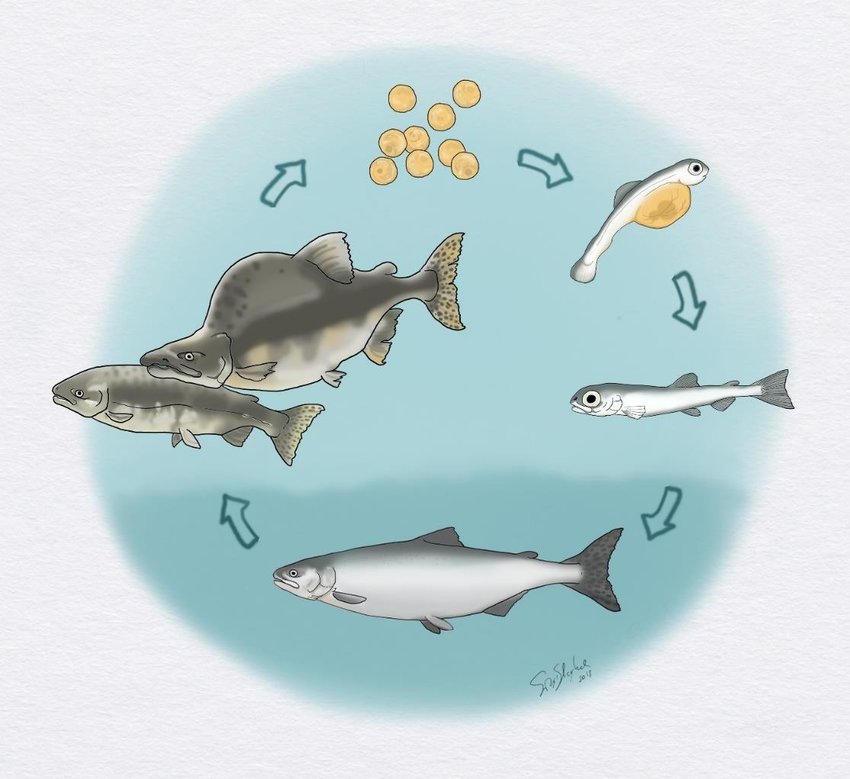] ] .pull-right-30[ ### Strict 2-year life cycle Year 0: - Spawn in late-summer - Hatch in winter - Emerge in spring Year 1: - Ocean phase Year 2. - Enter freshwater late spring - Spawn - Die ] --- ## Pink Salmon (*Onchorrhynchus gorbusha*): Type III .pull-left[ <img src="Lecture_PopulationEcology_PartIII_files/figure-html/OnchorhynchusTypeII-1.png" width="100%" /> ] .pull-right[ - **TYPE III:** low survivorship for juveniles; survivorship high once older ages are reached. Basically - produce a whole boatload of offspring and hope for the best. Typically short-lived species. Stage | Survival | Fecundity ----------|-------|--- 1. smolt | 0.05 | 0 2. ocean | 0.9 | 0 3. return | 0 | 21 ] --- class:inverse # Species Interactions ## Can also limit population growth .pull-left-40.large[ - Competition - Coexistence - Predation ] .pull-right-60[ 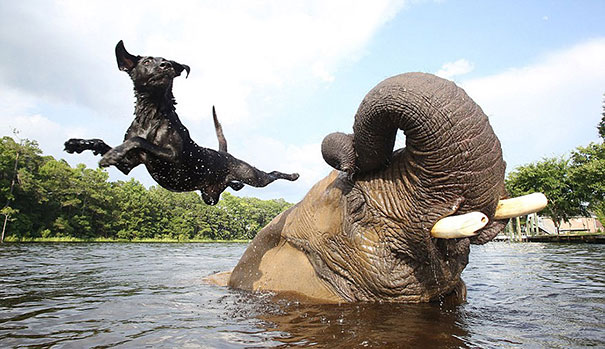] --- class:inverse # Competition .pull-left[ An interaction between organisms (intraspecific) or between species (interspecific) in which fitness of one is lowered by the presence of another. *We've already talked about* ***intra***-*specific competition!* ### Fitness is Reproductive Success - Combines **survival** and **reproduction** ] .pull-right[ ] --- ## Competitive Exclusion Principle Two species **occupying the same niche** can NOT coexist .pull-left[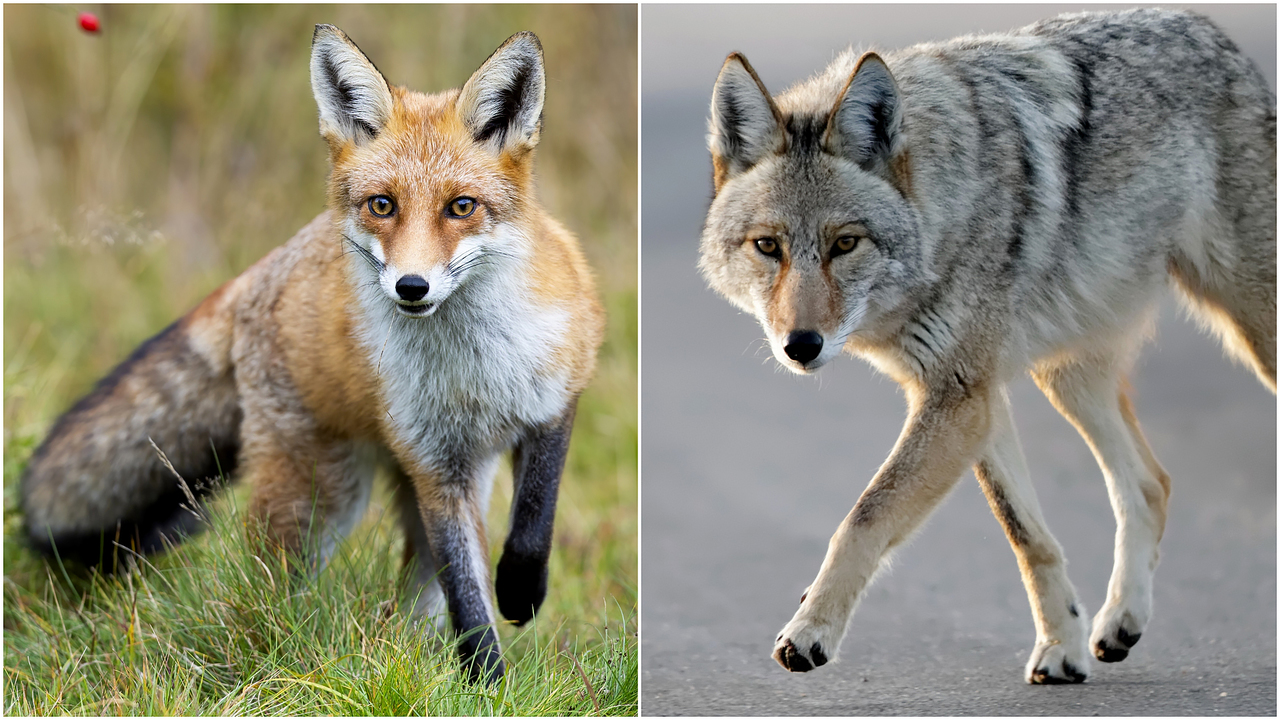 In *theory* Fox (*Vulpes vulpes*) and Coyote (*Canis latrans*) can't co-exist across southern Minnesota prairie / farmland ] .pull-right[ 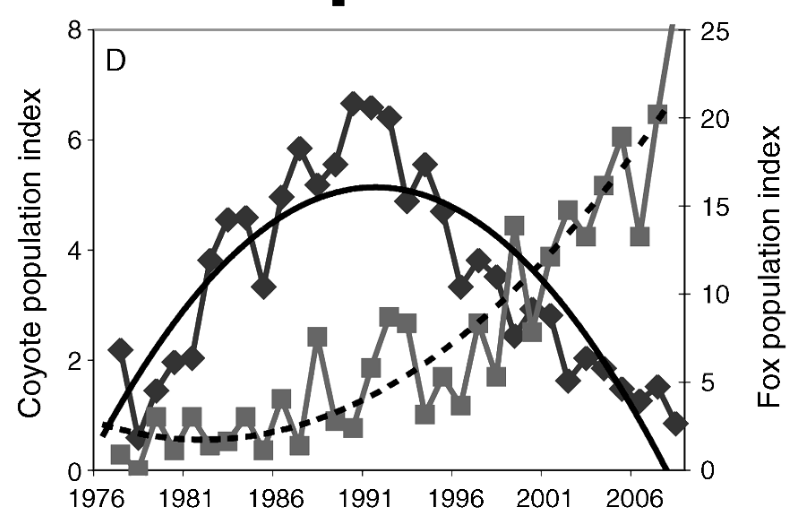 ] .center[[Levi and Wilmers (2021) *Ecology* 93(4)](https://doi.org/10.1890/11-0165.1)] --- ## Except they often do! (via niche partitioning) .pull-left[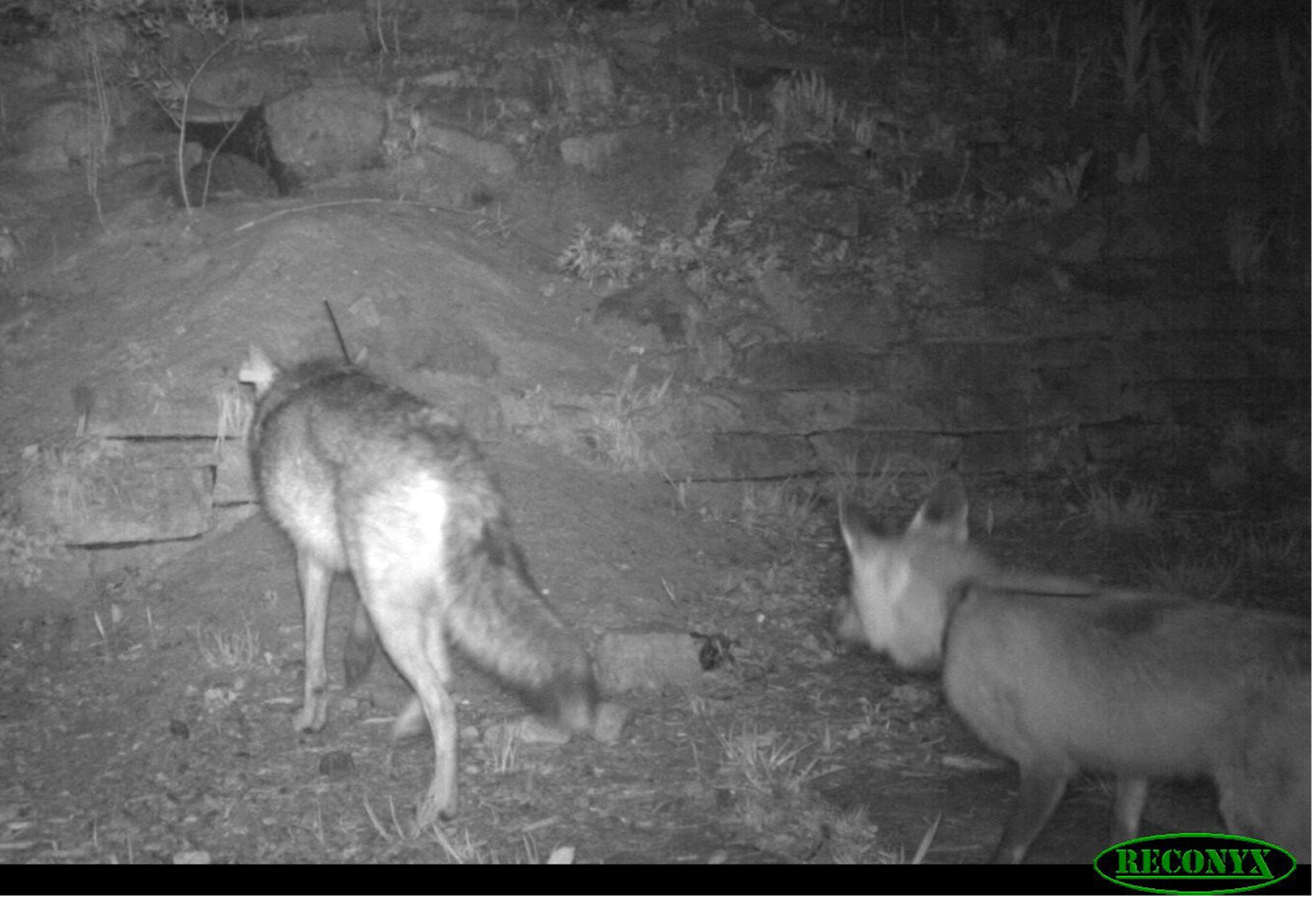  ] .pull-right-50[ 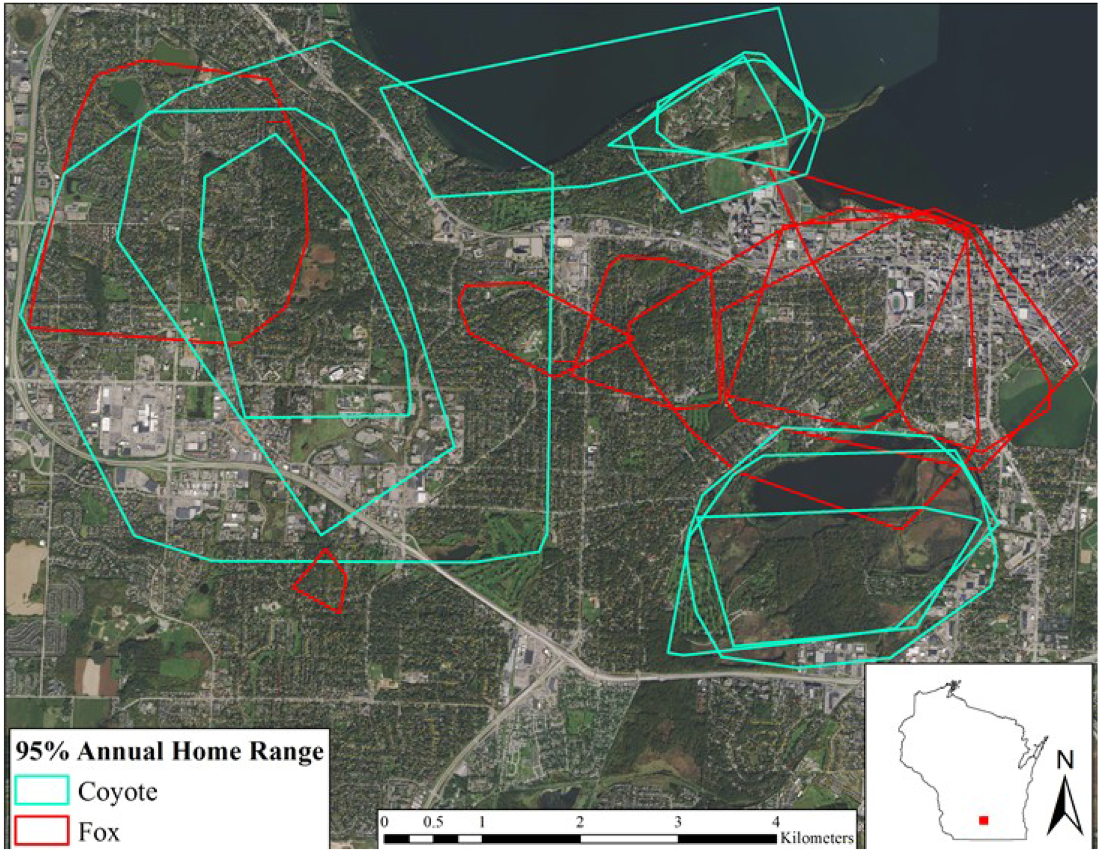 Madison, Wisconsin ] --- ## Squirlicorn vs. Pegamunk Limited space | Limited carrying capacity | Mutual animosity (periodic horn skewering and/or dropping on rocks) .... .center[***Can they get along!?***]  https://egurarie.shinyapps.io/SquirlicornVsPegamunk -- **Takeaway:** If the interactinos are not *too* extreme relative to population growth rate, coexistence is possible. --- ## Apparent competition .large[Species A eats Species B and C, if Species B increases, Species C is in trouble.] .pull-left-60[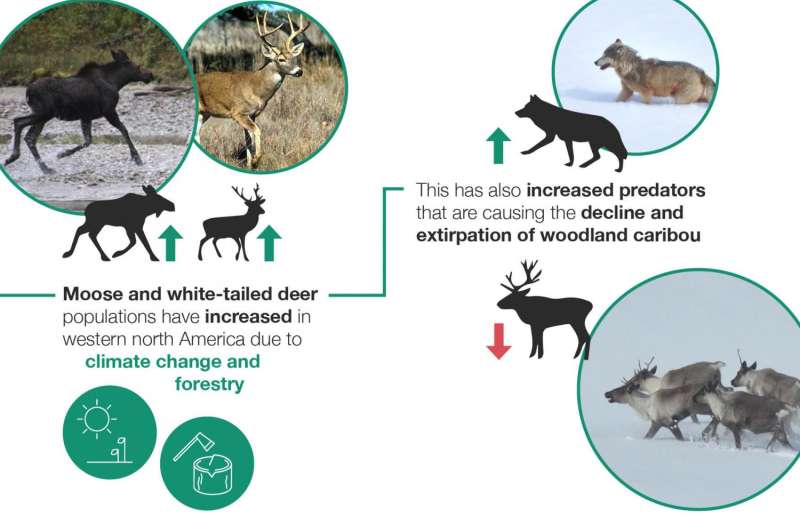] .pull-right-40[ Major habitat fragmentation from oil-gas extraction. 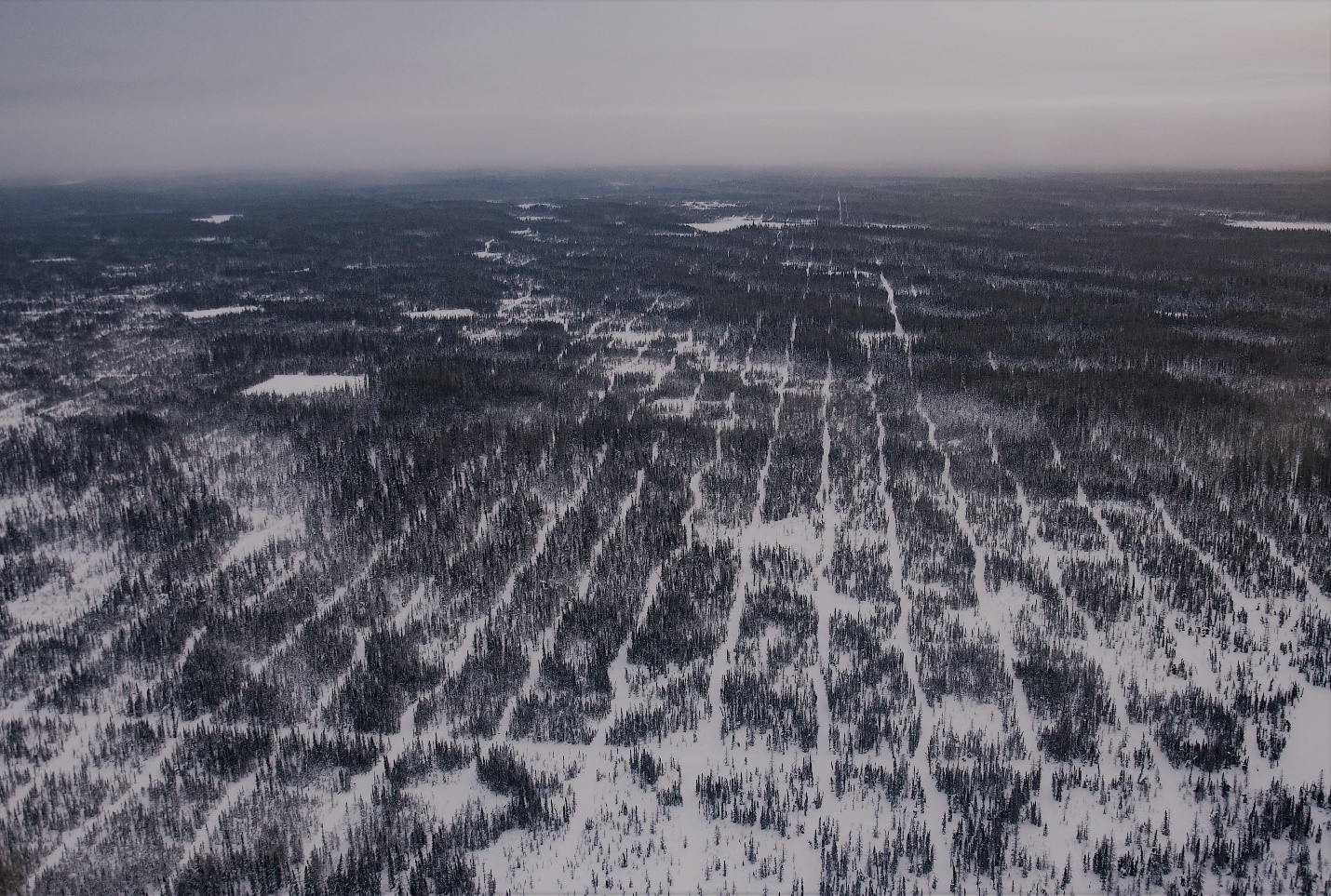 ***Serrouya et al. (2017)*** ] --- class: inverse ## Predation .pull-left[ 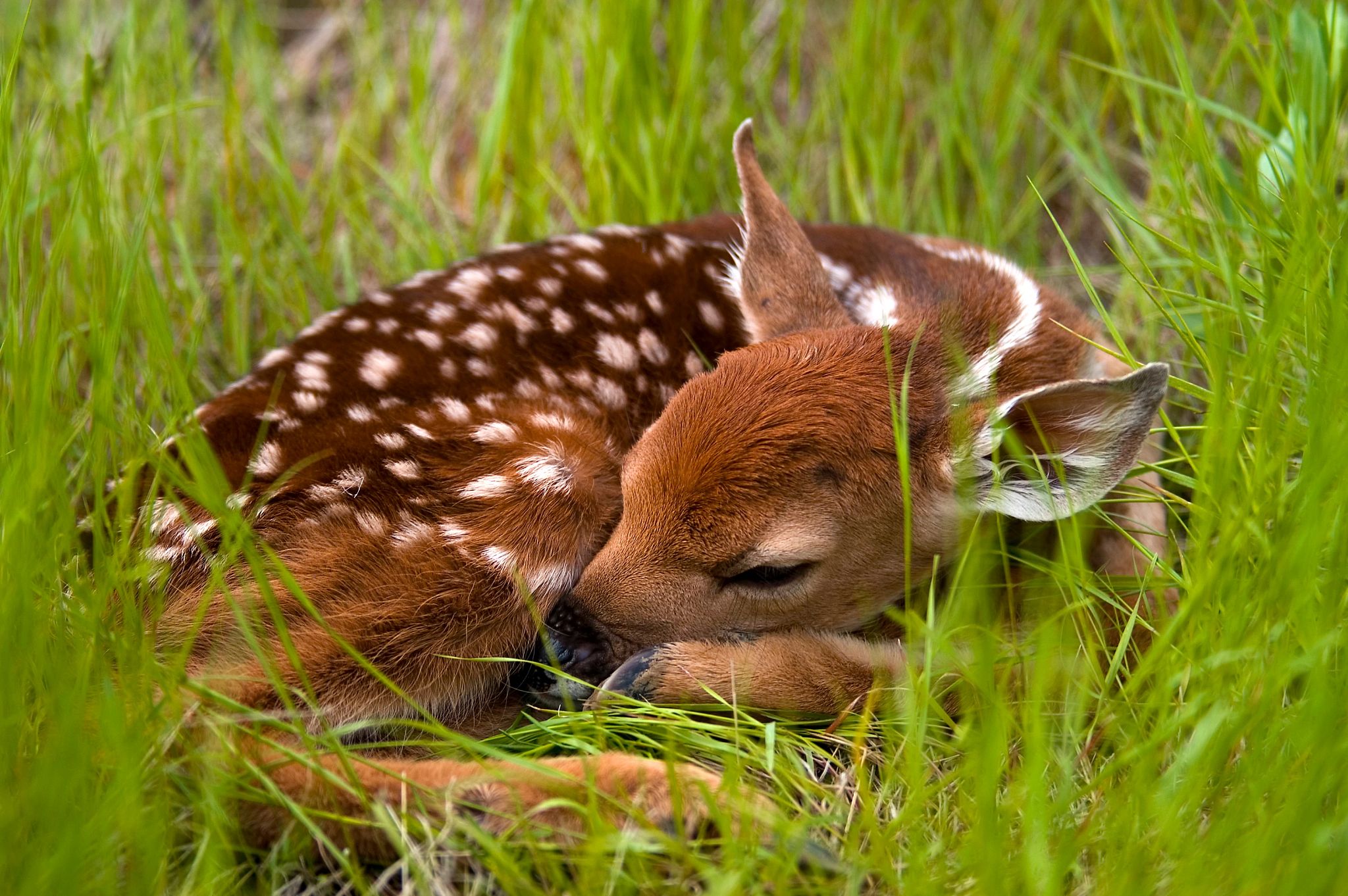 ] .pull-right.large[ an ecological process where one organism (the predator) consumes another (the prey). - Provides most of the principle route of energy flow through ecosystems - Strong selective pressure - **Chief source of density dependent effects** in regulation of many animal (and plant) populations ] --- ## Predator-prey dynamics Based (mainly) on fur sales from the Hudson Bay Company in Canada over 100 years. Roughly a 9 to 11 year, fairly synchronous, cycle. .pull-left-60[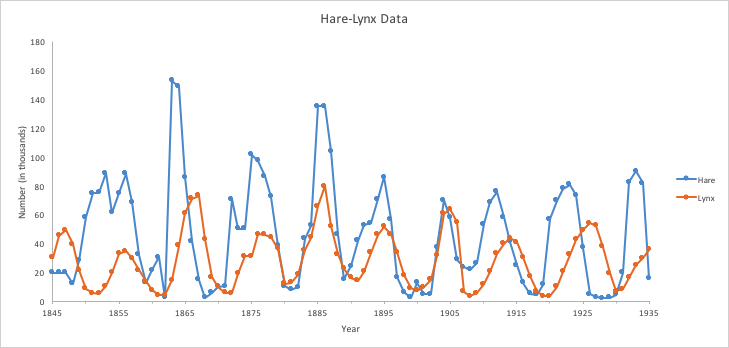] .pull-right-40[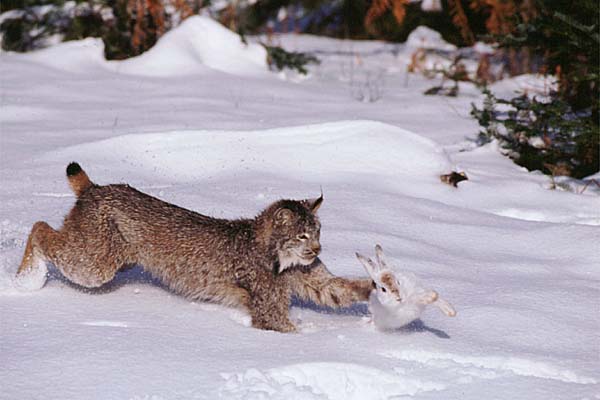] .pull-wide[ Theory suggests the **predators** and **prey** cycle ... but it turns out that is *probably* not the case.] --- ## Equations and models ### Exponential model .pull-left-40[ .red[ `\(\large \frac{dN}{dt} = r N\)` ] Basic assumption: Growth rate is proportional to population size ] .pull-right-60[] --- ## Equations and models .pull-left[ ### Exponential model `\(\large \frac{dN}{dt} = r N\)` .red[ ### Logistic model `\(\large \frac{dN}{dt} = r N \left(1 - \frac{N}{K}\right)\)` ] Assumption growth rate goes to 0 at `\(N=K\)` ] .pull-right-50[] --- ## Competition model .pull-left[ .red[ `$${dC \over dt} = r_c C\left(1- {C\over K_c} - \alpha {F \over K_c}\right)$$` `$${dF \over dt} = r_f F\left(1- {F \over K_f} - \beta {C \over K_f}\right)$$` ] contains carrying capacities AND interactions ] .pull-right-50[] --- ## Predator-Prey Model .pull-left-30[ .darkred[ `\(\large {dP \over dt} = -q P + \gamma VP\)` ] .blue[ `\(\large {dV \over dt} = r V - \sigma VP\)` ] ] .pull-right-70[] --- ## Predator-Prey-Prey Model .pull-left-30[ Wolf equation `\(W(t)\)`: $${dW \over dt} = (\gamma_m M + \gamma_c C - \delta)W $$ Moose equation `\(M(t)\)`: $${dM \over dt} = r_m M \left(1 - {M\over K_m}\right) - \sigma_m MW $$ Woodland caribou equation `\(C(t)\)`: $${dC \over dt} = r_c C \left(1 - {C\over K_c} \right)- \sigma_c CW $$ ] .pull-right-60[ 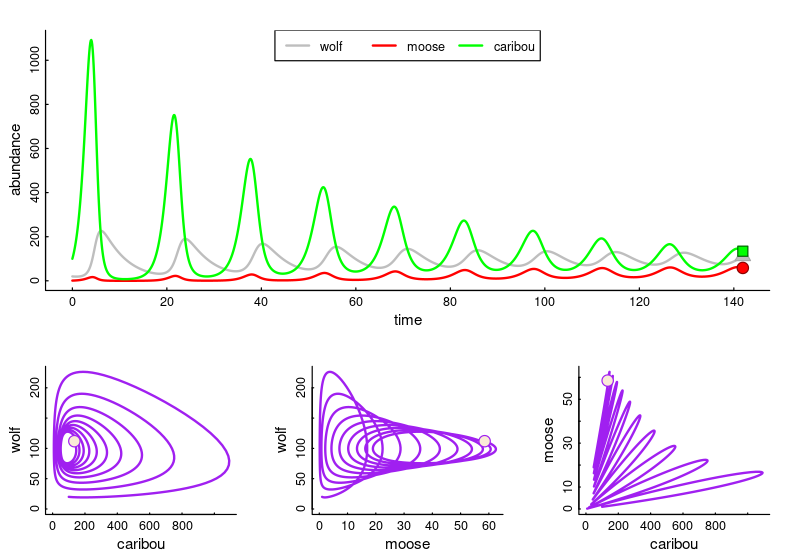 ] --- ## **To learn more:** 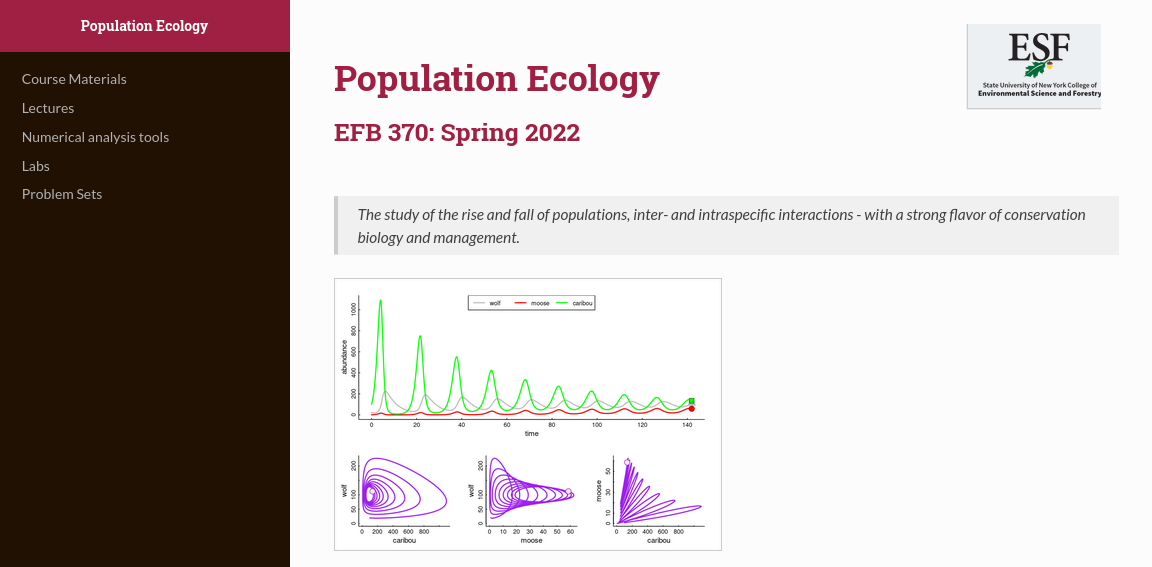 ] --- ### Take-aways .... .pull-left[ ### Top-down Sometimes predation is extremely important at limiting growth of prey populations. 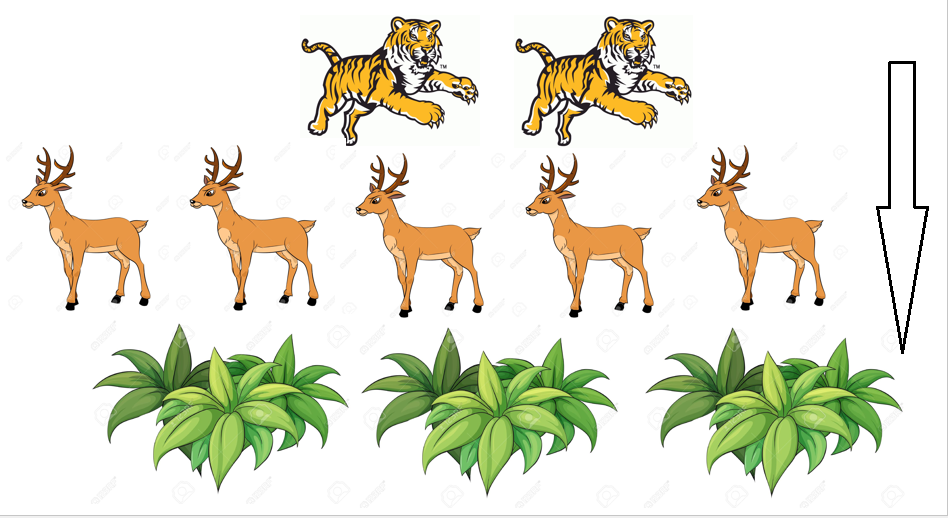 ] .pull-right[ ### Bottom-up Sometimes, predators are very much limited by the resources coming up the chain. .pull-right-60[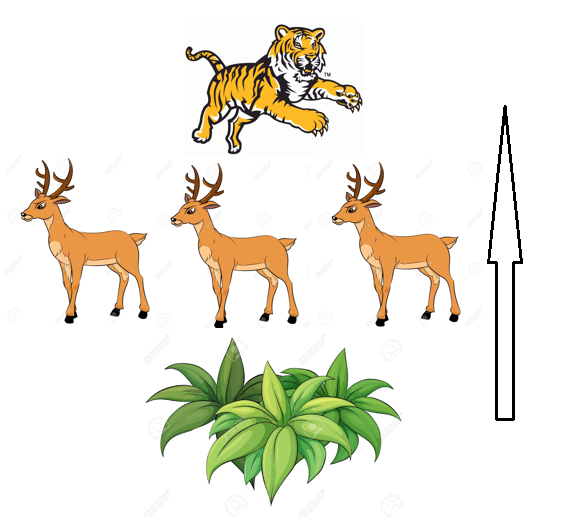] ] .large[ Resolving these questions is hard! (and interesting), and involves a combination of deep ecological research and modeling.]